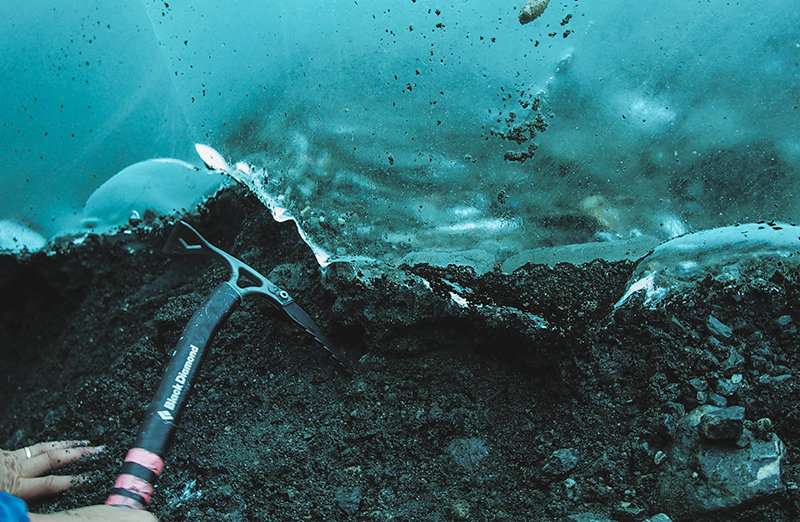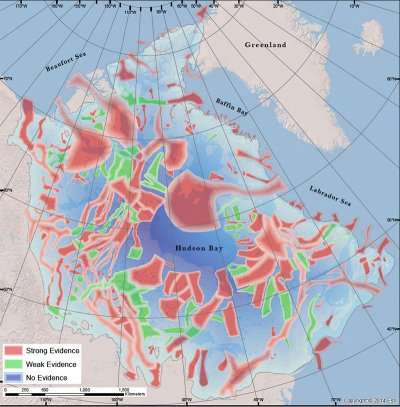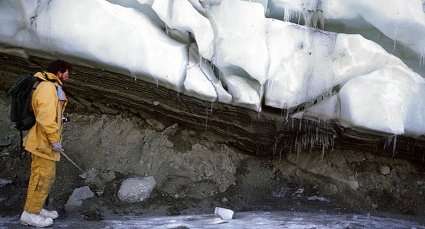Researchers expose the dirty secrets hidden under glaciers

UO researchers have found a way to account for how varying sediments underneath the world's glaciers control how fast glaciers slide.
Their new theory, introduced in a paper on bed strength in the journal Nature Communications, inserts a heavy dose of physics into a long-used methodology and accounts for what the team calls the dirty, dark undersides of glaciers.
Such information, which has been difficult to assess, is vital for building accurate projections of sea level changes amid rising global temperatures, said Alan Rempel, a professor in the Department of Earth Sciences and the paper's senior author.
The research, led by postdoctoral researcher Colin Meyer, gets at how the amount of sediment frozen to a glacier's base varies with underlying water pressure, melting rate and particle size. All that influences changes in friction, or resistance to sliding.
"This is a longstanding problem," Meyer said. "If we want to forecast what glaciers are going to do in the future, we have to talk about the place that we can't see: the interface between the ice and the bed."
To illustrate their theory, the UO researchers noted that regardless of the size or weight of a glacier, sliding accommodates ice flow that is driven by gravity and adjusts surface slopes so that friction at the bed never exceeds more than about 1 bar of stress. A bar is a metric unit of pressure.

Formulations introduced in the early 1950s by Swiss scientist Paul Mercanton and John Nye attributed the 1 bar stress limit to the plastic-like nature of ice deformation.
"Nye's work carried the caveat that the formula only works for nonsliding areas," Rempel said. "It's not the complete story. It only applies if the glacier is stuck."
The UO researchers, however, noted that 50 percent of all glaciers are sliding.
Using their new theory, which combined mathematical analysis with satellite data and geological evidence from regions previously covered by ice sheets, the UO team matched the 1 bar limit. That result provided confidence that freezing sediment controls the friction of the ice-sediment interface and will be influential in developing more accurate ice flow models.

"The research we are conducting is aimed at improving our understanding of the controls on sliding speed so that we can better predict the rate that glacial ice is delivered from the Earth's major ice sheets in Greenland and Antarctica to the oceans, where it contributes to sea level rise," Rempel said.
The third member of the team involved in the National Science Foundation-funded project, was Anthony S. Downey, then an undergraduate student. He graduated in 2017 and will begin his pursuit of a master's degree in geology this fall at California State University, Northridge.
Downey introduced the team's research in a presentation to Eugene middle schoolers in April 2017. He used corn syrup to show how viscous flows, including glaciers, respond to changes in conditions in their beds. He also created maps showing sliding and non-sliding glaciers in North America's Laurentide Ice Sheet for use with the study, which published in July.
More information: Colin R. Meyer et al. Freeze-on limits bed strength beneath sliding glaciers, Nature Communications (2018). DOI: 10.1038/s41467-018-05716-1
Journal information: Nature Communications
Provided by University of Oregon




















